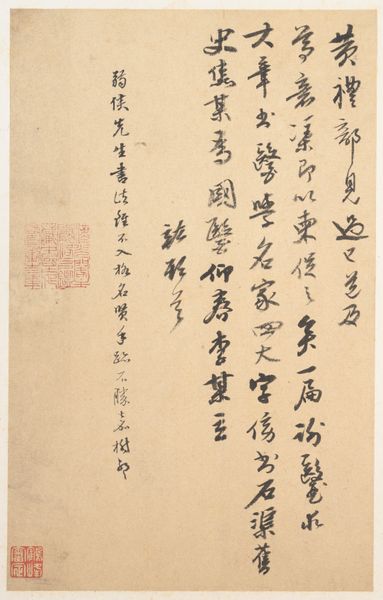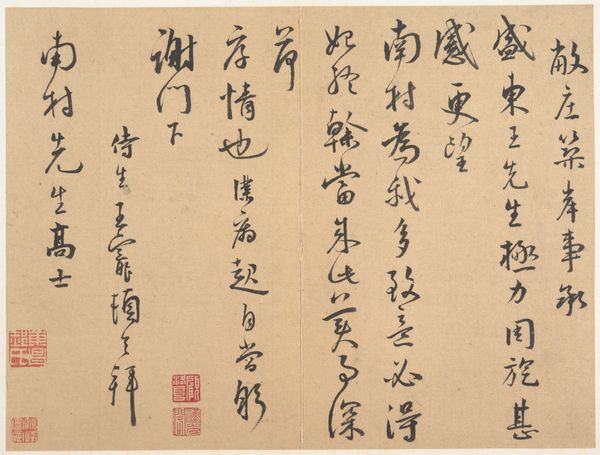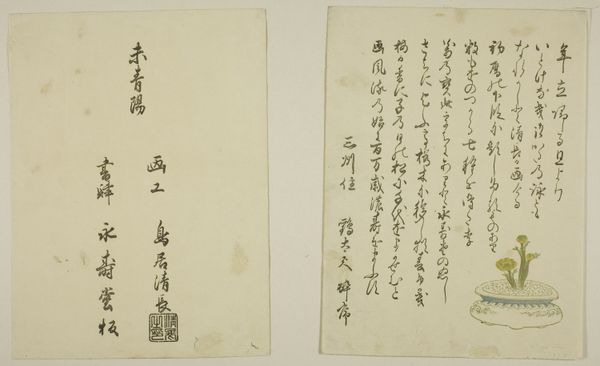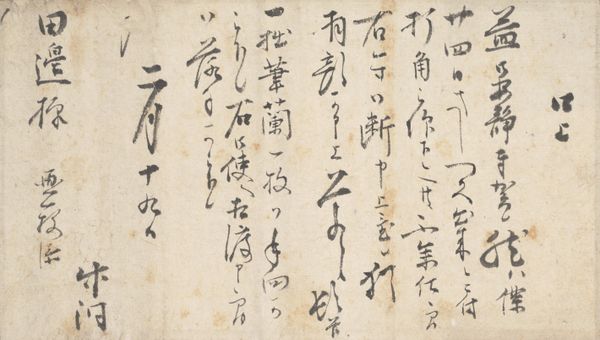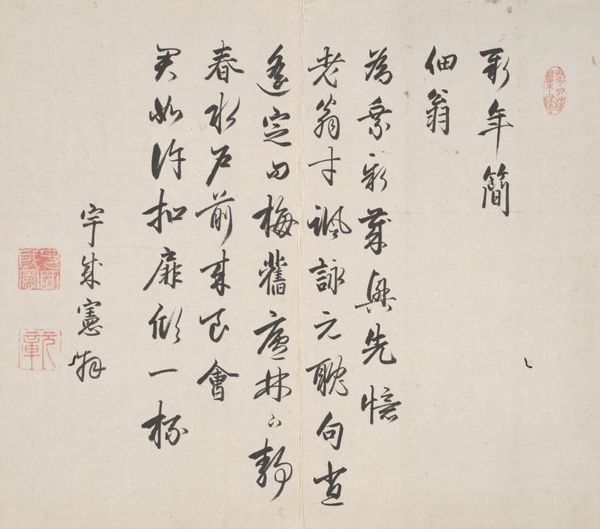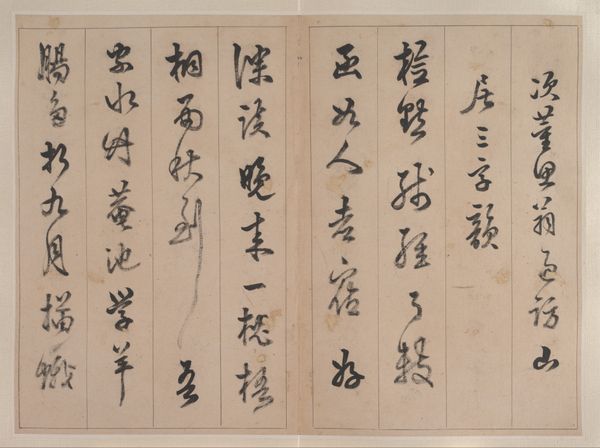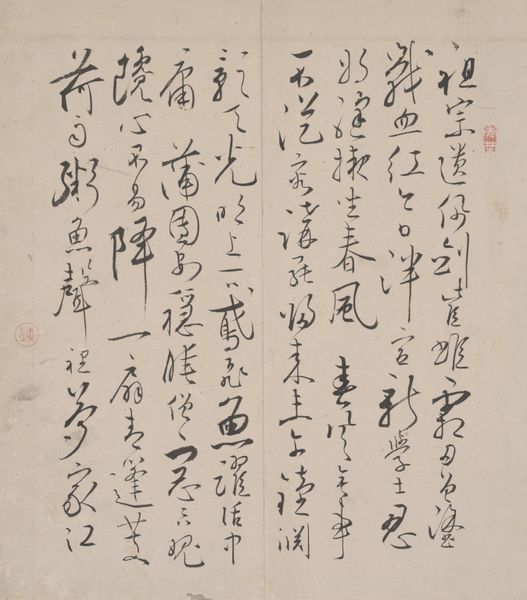
drawing, paper, ink
#
drawing
#
asian-art
#
landscape
#
paper
#
ink
#
orientalism
#
calligraphy
Dimensions: height 178 mm, width 309 mm
Copyright: Rijks Museum: Open Domain
Curator: Before us is "Plum Tree," a drawing in ink on paper by Hasegawa Settan, created sometime between 1800 and 1805. What catches your eye first about this work? Editor: Its ethereal quality. The delicacy of the plum blossoms against the stark calligraphy creates such a subtle, contemplative mood. It feels incredibly fragile. Curator: That feeling speaks to the social context. Botanical art during this period wasn't just about accurate depiction; it often reflected a refined appreciation of nature valued in scholarly circles, influencing aesthetic taste and even political discourse. The choice of plum blossoms itself has deeper significance. Editor: Ah, the plum! Iconographically, it’s loaded, isn't it? In East Asian traditions, the plum blossom is a potent symbol. It heralds spring, representing perseverance, hope, and the renewal of life because it blossoms even in the harshest winters. Curator: Precisely! And that symbol resonated powerfully within the elite cultural circles that produced and consumed works like these. Appreciation for the plum blossom even influenced the gardens they built and the poetry they wrote, solidifying it within Japan’s visual vocabulary. It was a motif repeatedly referenced in court culture to subtly critique political harshness. Editor: It’s remarkable how a single image, so delicately rendered, can carry such a weight of meaning. You see the delicate lines of the blossoms and you recognize renewal, perseverance—values deeply woven into the cultural fabric. Even today, it evokes a feeling of resilience. Curator: And its accessibility to those within its specific sphere created a sense of exclusivity, fostering a shared understanding. Editor: Looking closer, it's fascinating to see how Settan contrasted the hard, angular lines of the calligraphy with the soft curves of the branches. It mirrors the balance, I think, of strength and grace that the plum blossom embodies. It's not just decorative; it is a very powerful visual shorthand for endurance. Curator: Agreed. The interplay between image and text reveals how closely art was tied to broader systems of knowledge, status, and influence. Editor: It makes you reconsider what counts as a purely “aesthetic” experience. I feel more grounded when thinking about it today. Curator: Indeed. Understanding its place gives a deeper resonance and greater appreciation.
Comments
No comments
Be the first to comment and join the conversation on the ultimate creative platform.




